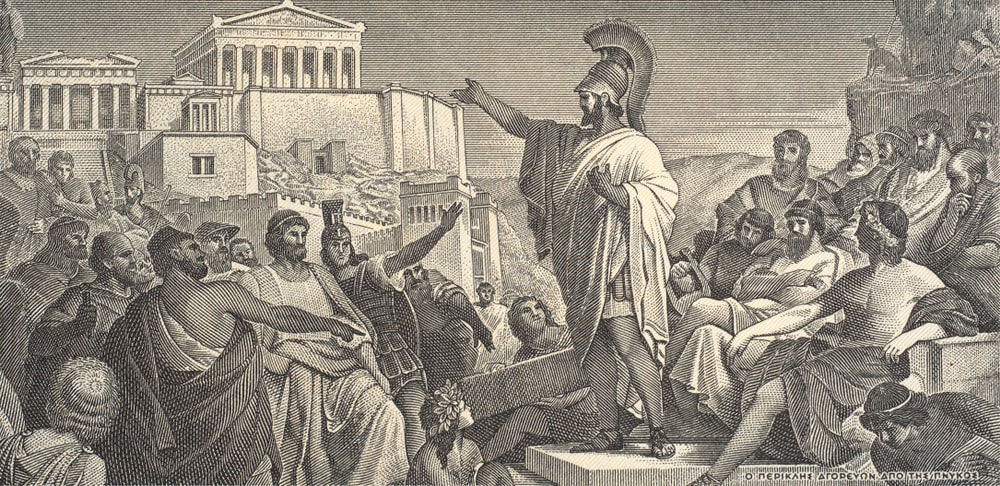
As our 35th President of the United States, himself the product of Irish Catholic immigrant stock, rightly pointed out, “Every American who has ever lived, with the exception of one group, was either an immigrant himself or a descendant of immigrants.” JFK wrote those words in his 1958 book A Nation of Immigrants. Once he gained the presidency, he called on Congress to undertake a complete reevaluation of immigration law.
Six decades later, not much has changed. If anything, in the post Trump world, the topic of immigration is as contentious and controversial as it was back in Kennedy’s day. Strangely, the colossal neoclassical sculpture that stands on Liberty Island in New York has a plaque inscribed with the words “Give me your tired, your poor/Your huddled masses yearning to breathe free.” Yet, many in our country want freedom for themselves, but not for others.
The United States has much to thank the immigrants who came to these shores looking for freedom and the room to breathe as they went on not only to make America a better country but, in many ways, changed the world for the better. Here we celebrate those immigrants and their extraordinary contributions.

1. Joseph Pulitzer
Born József Pulitzer on April 10, 1847, in Makó, about 200 km south-east of the Hungarian capital of Budapest, Pulitzer tried to enlist in several European armies in an attempt to find work before deciding to emigrate to the United States in 1864 at the age of 17.
His journey to America was paid for by Massachusetts military recruiters who were seeking soldiers for the American Civil War. However, once he discovered they were pocketing most of the money themselves, he left Boston and made his way to New York, where he was paid $200 to enroll in the Lincoln Cavalry on September 30, 1864.
He became a naturalized American citizen just three years later, on March 6, 1867. Two years later, when he was just 22, three years under the required age to serve as a state representative, he secured the nomination. He would eventually go on to serve a term as U.S. Representative for New York.

After he served his time in the Union army, he studied English and became a journalist. He was so successful in this endeavor that he eventually bought the Democratic leaning New York World newspaper, where he served as publisher from 1883 to 1911.
His paper was a proponent of the sensational headline style of yellow journalism, and he developed a fierce rivalry with fellow publisher and newspaper magnate William Randolph Hearst. Over his lifetime, he accrued a considerable personal wealth and wanted to use some of that money to start the world’s first school of journalism at Columbia University.
Although the university’s president at the time turned down the offer, his successor Nicholas Murray Butler gladly took the money. Sadly, Pulitzer’s dream would not be fulfilled until after his death from heart disease on October 29, 1911. He would leave the required funds, $2,000,000, for the establishment of the school in his will and the award that would bear his name.
On September 30, 1912, classes began with 79 undergraduate and postgraduate students, including a dozen women. The first Pulitzer Prizes were awarded on June 4, 1917.
If you want to read more about the remarkable life of Pulitzer, click HERE

2. Madeleine Albright
Born Marie Jana Korbelová on May 15, 1937, in the Smíchov district of Prague, Czechoslovakia. Her father Josef Korbel was a Czech diplomat and a staunch advocate supporter of the early Czech democrats.
He was serving as a press-attaché at the Czechoslovak Embassy in Belgrade when she was born, but when the Munich Agreement was signed in September 1938 and the Nazis occupied Czechoslovakia, the family was forced into exile.
By May the following year, the family fled to Britain, where her father worked for Edvard Beneš’s Czechoslovak government-in-exile. After the war, the family briefly returned to Prague before her father was appointed as press attaché at Czechoslovakian Embassy in Yugoslavia.
However, Korbel was deeply opposed to Communism and feared his daughter would be exposed to Marxism in a Yugoslav school, so they decided to emigrate to the United States when Madeleine was just 11, settling in Denver, Colorado.

Albright would become a U.S. citizen in 1957 and graduated from Wellesley College in 1959 before going on to earn a Ph.D. from Columbia University in 1975, writing her thesis on the 1968 Prague Spring.
Her foray into politics began when she initially got a job as an aide under Senator Edmund Muskie before taking a position under the hugely influential Polish-American diplomat and political scientist Zbigniew Brzezinski on the National Security Council.
After Jimmy Carter left office in 1981, she left the National Security Council to join the academic faculty of Georgetown University and served as a foreign policy advisor to several Democratic candidates.
When Bill Clinton became president in 1992, Albright helped assemble his National Security Council. The following year, Clinton appointed her as U.S. Ambassador to the United Nations, a post she held for four years. In 1997, she would become the first female Secretary of State and remain in that position until Clinton left office in 2001.
If you wish to read her inspiring and bestselling memoir, click HERE

3. Jerry Yang
When it comes to internet entrepreneurs, you might not have heard of Jerry Yang, but we’re certain you’ve heard of the company he co-founded, a little web services provider called Yahoo! Born Yang Chih-Yuan in Taipei, Taiwan, on November 6, 1968, when he was just two years old his father would pass away.
By the time he was ten, his mother, who was a professor of English and drama, feared that Taiwan would soon be annexed by China and moved Yang and his little brother to San Jose, California. Yang recalls that the only word he knew in English was ‘shoe.’ He would change his name to the more Americanized Jerry.
Within three years of arriving in the country, ‘Jerry’ became fluent in English and soon enrolled in Piedmont Hills High School. He would go on to study electrical engineering at Stanford University, earning both a Bachelor of Science and a Master of Science degree.

This is where he would meet fellow Yahoo! founder David Filo, and the two would create an early Internet website called “Jerry and David’s Guide to the World Wide Web,” in 1994 while still at Stanford. It was a basic directory of other sites on the Internet and quickly grew in popularity and the pair decided to renamed it “Yahoo! Inc.”.
On March 2, 1995, Yahoo! was incorporated, and a search engine function, called Yahoo Search, was introduced. By April 1995, their young company received a $2 million investment from Sequoia Capital, with a second round of funding coming from Reuters and Softbank just a few months later. By 1999, Yang was named to the MIT Technology Review TR100 as one of the top 100 innovators in the world under the age of 35.
Yahoo quickly became one of the first popular search engines on the Internet, and after only two years of operations, the company’s stock price rose by a staggering 600%. Yahoo and Yang would earn their place in modern American technological, and business history, and the company’s success would make Yang a personal fortune of over $2 billion today.
If you wish to learn about the incredible rise of Yahoo! then click HERE

4. John Muir
Naturalist, author, environmental philosopher, botanist, zoologist, glaciologist, John Muir earned his names as “John of the Mountains” and “Father of the National Parks”, as he was one of the earliest advocates for the preservation of wilderness and the many natural treasures in the United States.
Born in Dunbar, East Lothian, Scotland, on April 21, 1838, to strict religious parents, Muir became a lover of nature from a young age as he would take short walks with his grandfather when he was three. He quickly became fascinated with the East Lothian landscape and would spend his days wandering the countryside and coastline, much to the annoyance of his father who believed that anything that would distract his son from Bible studies was frivolous and punishable.
As Muir’s love of nature grew, he became interested in the works of fellow Scot, poet, ornithologist, naturalist, and illustrator Alexander Wilson, who himself would become known as the “Father of American Ornithology.”
When Muir was 11 years old, his father became discontented with the Church of Scotland, finding it insufficiently strict in faith and practice, leading him to join a congregation of the Campbellite Restoration Movement, called the Disciples of Christ, and move himself and his family to America in 1849.

The family would settle on a 160 acre farm near Portage, Wisconsin, called Fountain Lake Farm, designated a National Historic Landmark on June 21, 1990. By 22, he had enrolled at the University of Wisconsin–Madison, but rarely attended classes and never graduated. His time at the university did help him gain enough knowledge about geology and botany, knowledge that would aid him in his future endeavors.
In 1863, his brother left Wisconsin and moved to Southern Ontario, Muir followed and spent the next few years exploring the Canadian wilderness, taking a job at a sawmill and rake factory before returning to America in March 1866 to work in a wagon wheel factory in Indianapolis. However, after an accident nearly cost him his sight, he decided to follow his dream of exploration and the study of plants.
In 1878, Muir served as a guide and artist for the United States Coast and Geodetic Survey of the Great Basin of Nevada and Utah, before settling in San Francisco. He continued to pursue his love of science, especially geology, and on May 28, 1892, he would found the Sierra Club, one of the first large-scale environmental preservation organizations in the world.
His enthusiasm toward nature and the many essays he wrote not only helped influence modern environmental consciousness, but helped persuade congressmen, and even presidents, to take action to help preserve large nature areas.
If you are a nature lover and want to learn more about this natural treasure, click HERE

5. Irving Berlin
Born Israel Beilin on May 11, 1888, in the Russian Empire, there is some confusion about where he was born. His family came from the shtetl of Tolochin, which is now in modern day Belarus, but other documents put his place of birth as Tyumen, Siberia. Wherever he was born, in his earliest years he was raised in abject poverty along with his seven siblings.
His father Moses was a cantor (a prayer leader and musician) in his local synagogue. However, after Alexander II coronation as Emperor of Russia on 7 September 1856, and enacted the Edict of Emancipation of Russia five years later, Jewish people could not hire Christian servants, could not own land, and were restricted in travel.
By 1893, Berlin’s father decided enough was enough and took the family to Antwerp where they boarded the SS Rijnland from the Red Star Line, bound for America. On September 14, the family arrived at Ellis Island in New York City. The family struggled to get by, so, by the age of eight, with only a few years of schooling Berlin became a newspaper boy for The Evening Journal to help support his family.
By the time he was thirteen, his family’s situation grew worse as his father passed away. So, his mother Lena took a job as a midwife, three of his sisters worked wrapping cigars, and his older brother worked in a sweatshop making shirts. When he was fourteen, he felt like he wasn’t contributing enough so decided to run away and live on the streets.

The only talent Berlin has was the same as his late father, he was a gifted singer. Making enough to just get by singing well-known tunes for pennies, he would eventually get a job as a singing waiter at the Pelham Cafe in Chinatown where he also taught himself how to play the piano. His first published song, “Marie from Sunny Italy”, a collaboration with the cafe’s resident pianist Mike Nicholson, earned him 33 cents in 1907.
His talents caught the attention of Max Winslow, who worked for music publisher Harry Von Tilzer Company and convinced his employer to hire him. A few years later in 1911, Berlin composed “Alexander’s Ragtime Band” which became an instant hit, sparked an international dance craze, and made him a star.
Over his subsequent 60-year career he wrote an estimated 1,500 songs, reaching the top of the charts 25 times and having his songs nominated eight times for Academy Awards. His lasting legacy from an American point of view, apart from being considered one of the greatest songwriters of all time, he would write a song during World War I in 1918, that we still sing today. God Bless America.
If you wish to know more about this musical genius, click HERE





